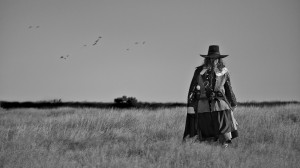
There’s a broadway musical that goes by the name Company that has always been a personal favorite of mine. The musical is composed of increasingly personal scenes between Robert, a bachelor celebrating his 35th birthday, the married couples that are his best friends, and the three women he is currently dating. It’s a tale that’s weirdly close to my heart, with songs that are often amusing and sometimes heartbreaking. To say I’ve seen and heard Company over a hundred times — be it the original Broadway cast, Sam Mendes’ production in ‘95, the brilliant revival starring Raúl Esparza in ‘06, and even the Neil Patrick Harris starring edition in ‘11 — wouldn’t be at all a stretch. And yet, it was recently brought to my attention that I’d never experienced the documentary Company: Original Cast Album. That wrong has now been righted.
Many people with a fondness for documentaries will recognize the name D.A. Pennebaker immediately, likely calling to mind some of his works like Monterey Pop and Ziggy Stardust and the Spiders from Mars, or those co-directed with his partner Chris Hegedus, such as The War Room. It isn’t here I begin my relationship with Pennebaker’s films, but it might as well be, considering the only other work of his I’ve seen is also in part greatly related to Company; it’s Elaine Stritch at Liberty. But where that recording of Stritch’s brilliant one-woman show reminds one distinctly of the way Bob Fosse once recorded Liza Minnelli’s Liza with a Z (with less energy and more intimacy), Company: Original Cast Album is a beast entirely its own, even if they share a musical number.
As most folks know, with almost every musical comes an original cast recording album. We’re usually treated to behind the scenes snippets on YouTube nowadays, but a look as intimate and real as what Pennebaker recorded is near-impossible to find. In the documentary, Pennebaker shows us the production of the album and the way actors interact with composer/lyricist Stephen Sondheim, producer/director Harold Prince, musical director Harold Hasting, playwright George Furth, and the band, to both positive and negative results at times. An abundance of the documentary plays out in a very fly-on-the-wall style, the camera only providing us glimpses of performances and discussions behind the glass wall that separates producer from performer.
Occasionally though, Pennebaker chooses to interview the performers for the sake of establishing the massive different between performing on stage and in a recording studio. As Susan Browning says in between takes of her performance of “You Could Drive A Person Crazy,” says, “Oh it’s harder to sing here. Well, first of all you’re dancing on the stage so that you’re all loose and it’s easy and everything goes together. You try to be perfect on stage, but it’s different — the moment passes by. But this is the definitive; it’s the end-all and be-all of this song, and god.” She pauses, laughs, and adds, “That could drive a person crazy.”
In addition to interviews with the actors though, we hear from the great Sondheim himself. He speaks of his past as a composer and/or lyricist and the way many people wouldn’t take him seriously as one or the other. His meticulous nature is depicted on screen, not as something negative but rather something necessary to craft the perfect album. Even when he’s not on screen, his presence is there. He’s not just in the words and music being performed, but in the nervous looks of a performer trying to get everything just right. But best of all are watching the performances unfold in long takes that shift from up-close-and-personal to wide in scope to capture each performer in full.
Take one, take two, take ten; it’s nothing like being on stage, where a little mistake would be missed by most. Every note counts and the audio needs to be perfect or else the recording will be doomed. The pieces unfold as beautifully as ever, and even when they’re cut short for the sake of fixing something that’s off, they sound great. The tune that causes the group the most trouble is Elaine Stritch’s rendition of “Ladies Who Lunch,” a hell of a song that’s tough for even the most skilled performer to nail. Even watching the takes that the producers consider bad are breath-taking, which is one of the hardest parts of watching. Just as something that is heard on stage is immensely different to something that is heard on tape, what the camera captures could sound and look entirely different to what truly unfolded.
For all my fondness of short documentaries that use up their running length beautifully, I find myself always saddened by their length. To think that we’ve only seen under an hour of this recording when there is and was so much more to be seen is a little heartbreaking, but I’m thankful we got as much as we did — and a damn fine album to boot. Regardless, Company: Original Cast Album remains the best look at what a sometimes strenuous and sometimes delightful process recording a cast album for a musical can be. It cares about the little things these folks do together; whether it’s falling into character behind a microphone, or nitpicking at a change in note that the casual listener would never notice. That love and attention to detail we see behind the scenes from these actors and Sondheim is exactly why Company is one of the greatest musicals around, and will remain so for a long time.
–
Company: Original Cast Album is available on YouTube.
Directed by D.A. Pennebaker; 58 minutes.



 Derek
Derek
 Isabelle
Isabelle